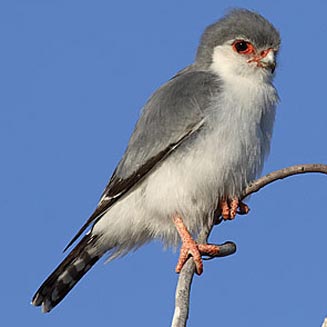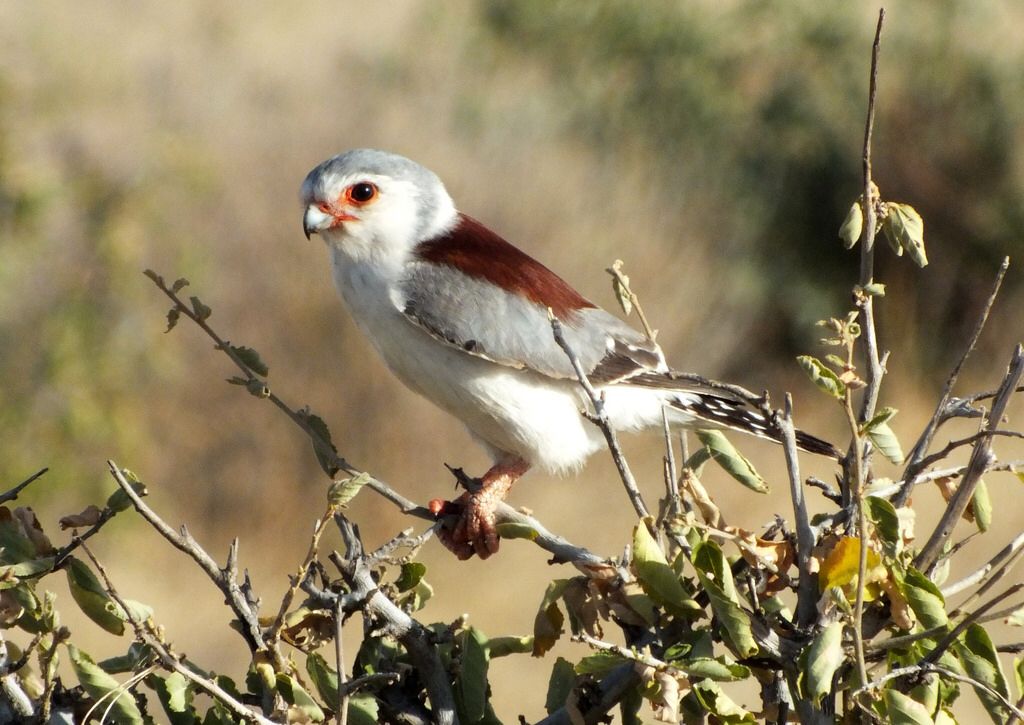The African Pygmy Falcon: A Closer Look At Polihierax Semitorquatus
Share
The African Pygmy Falcon, scientifically known as Polihierax semitorquatus, is a fascinating bird that belongs to the order Falconiformes and the family Falconidae. This small raptor is not only notable for its size but also for its unique behaviors and ecological significance. In this article, we will explore the taxonomy, physical characteristics, habitat, diet, behavior, reproduction, and conservation status of this remarkable species.

Taxonomy
The African Pygmy Falcon is classified under the suborder Falcones and the subfamily Falconinae. It was first described by A. Smith in 1836, with the type designation Falco simitorquata. The species is primarily found in southern Ethiopia and Somalia, extending south through Kenya to northern Tanzania, and west to Angola and Namibia.
Physical Characteristics
The African Pygmy Falcon is one of the smallest falcons, measuring about 20-25 cm in length. It has a distinctive appearance, characterized by a compact body, short wings, and a relatively long tail. The plumage is predominantly grayish-brown with a white throat and a striking black band across the chest, giving it a semi-collared appearance. The eyes are bright yellow, which contrasts beautifully with its darker feathers.

Habitat
This species thrives in open savannas, grasslands, and scrublands, often near acacia trees or other tall vegetation that provides perches for hunting. The African Pygmy Falcon is typically found at elevations ranging from sea level to about 1,500 meters. Its range includes various countries in eastern and southern Africa, where it adapts well to different habitats.

Diet
The diet of the African Pygmy Falcon primarily consists of insects, small reptiles, and occasionally small mammals. It is known for its hunting prowess, often employing a sit-and-wait strategy from a high perch. Once it spots potential prey, it swoops down with remarkable speed and agility. This species plays a crucial role in controlling insect populations in its habitat.

Behavior
The African Pygmy Falcon is a social bird, often found in pairs or small groups. It is known for its vocalizations, which include a series of high-pitched calls that can be heard during courtship and territorial displays. This species is also known to engage in cooperative breeding, where non-breeding individuals assist in raising the young.

Reproduction
Breeding typically occurs during the rainy season, with the female laying 2-4 eggs in a nest that is often located in a tree or a hole in a rock. Both parents participate in incubating the eggs and feeding the chicks once they hatch. The young fledge after about 30-35 days but may remain dependent on their parents for some time after leaving the nest.
Conservation Status
The African Pygmy Falcon is currently classified as Least Concern by the IUCN Red List. However, habitat loss due to agricultural expansion and urbanization poses a potential threat to its populations. Conservation efforts focused on habitat preservation and sustainable land use practices are essential to ensure the continued survival of this species.
Observing the African Pygmy Falcon
For birdwatchers interested in observing the African Pygmy Falcon, the best locations are open savannas and grasslands in its range, particularly during the early morning or late afternoon when they are most active. Binoculars and a field guide can enhance the experience, allowing enthusiasts to appreciate the beauty and behavior of this remarkable bird.
The African Pygmy Falcon is a small yet significant player in its ecosystem, showcasing the intricate balance of nature. Its unique adaptations and behaviors make it a captivating subject for both birdwatchers and researchers alike. As we continue to study and protect these incredible creatures, we gain a deeper understanding of the biodiversity that enriches our planet.